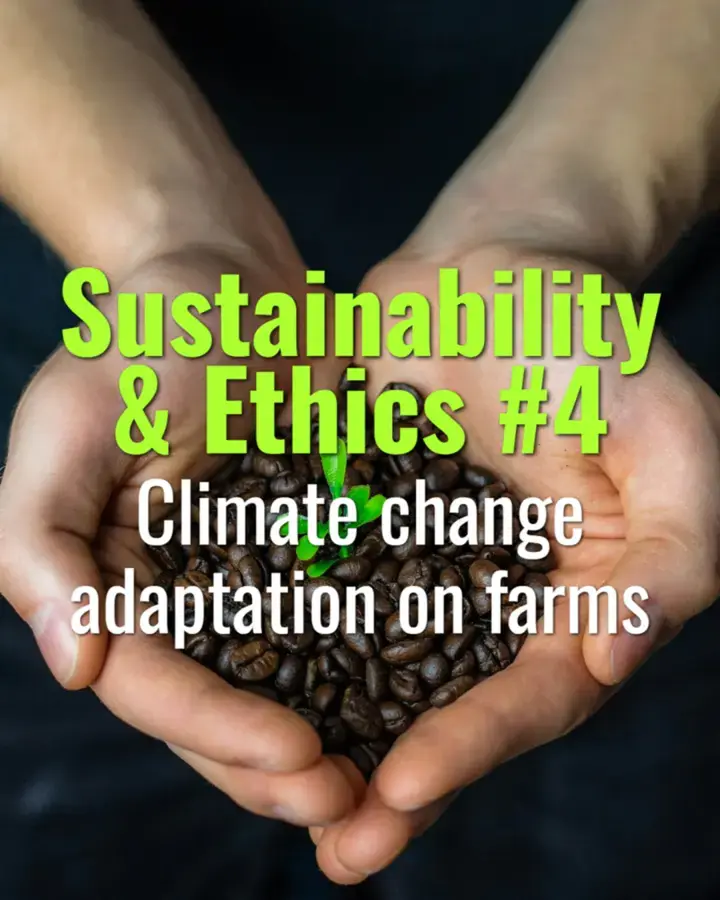Climate change adaptation on farms
How coffee farmers are adapting to climate change through agricultural practices, crop diversification, and resilience strategies.
- Coffee Basics Nerds
- 2 min read
Article 4 of 12 in Sustainability & Ethics/

Climate Risks in Coffee Farming
- Rising temperatures push arabica cultivation to higher altitudes.
- Increased frequency of droughts, erratic rainfall, and extreme storms.
- Greater vulnerability to pests and diseases (e.g., leaf rust, coffee berry borer).
Adaptation Strategies
1. Shade Management
- Planting shade trees to regulate microclimate.
- Reduces heat stress, conserves moisture, and provides biodiversity benefits.
2. Soil & Water Conservation
- Mulching, terracing, and cover crops reduce erosion and retain soil moisture.
- Rainwater harvesting and drip irrigation improve water efficiency.
3. Climate-Resilient Varieties
- Adoption of disease- and drought-tolerant hybrids (e.g., Castillo, Batian, F1 hybrids).
- Helps maintain yields under stress conditions.
4. Diversification
- Planting companion crops (bananas, avocados, cacao) provides shade and additional income.
- Reduces dependence on volatile coffee markets.
5. Agroforestry Systems
- Integrating trees with coffee for carbon sequestration and climate buffering.
- Supports ecosystem services and long-term sustainability.
6. Early Warning & Forecasting
- Access to climate data and weather forecasts enables better farm planning.
- Cooperative and NGO partnerships help farmers anticipate risks.
Barriers to Adaptation
- Financial constraints for smallholders.
- Limited access to technical training.
- Market structures that don’t reward sustainable adaptation.
Industry Support
- Certifications (RA, Fairtrade) increasingly include climate resilience standards.
- Roaster and importer partnerships fund adaptation projects.
- Research institutes developing new resistant cultivars.
Summary
Climate change poses serious risks to coffee production, but farmers adapt through shade management, soil conservation, resilient varieties, diversification, and agroforestry. Industry support and farmer training are essential to scale these strategies for long-term resilience.